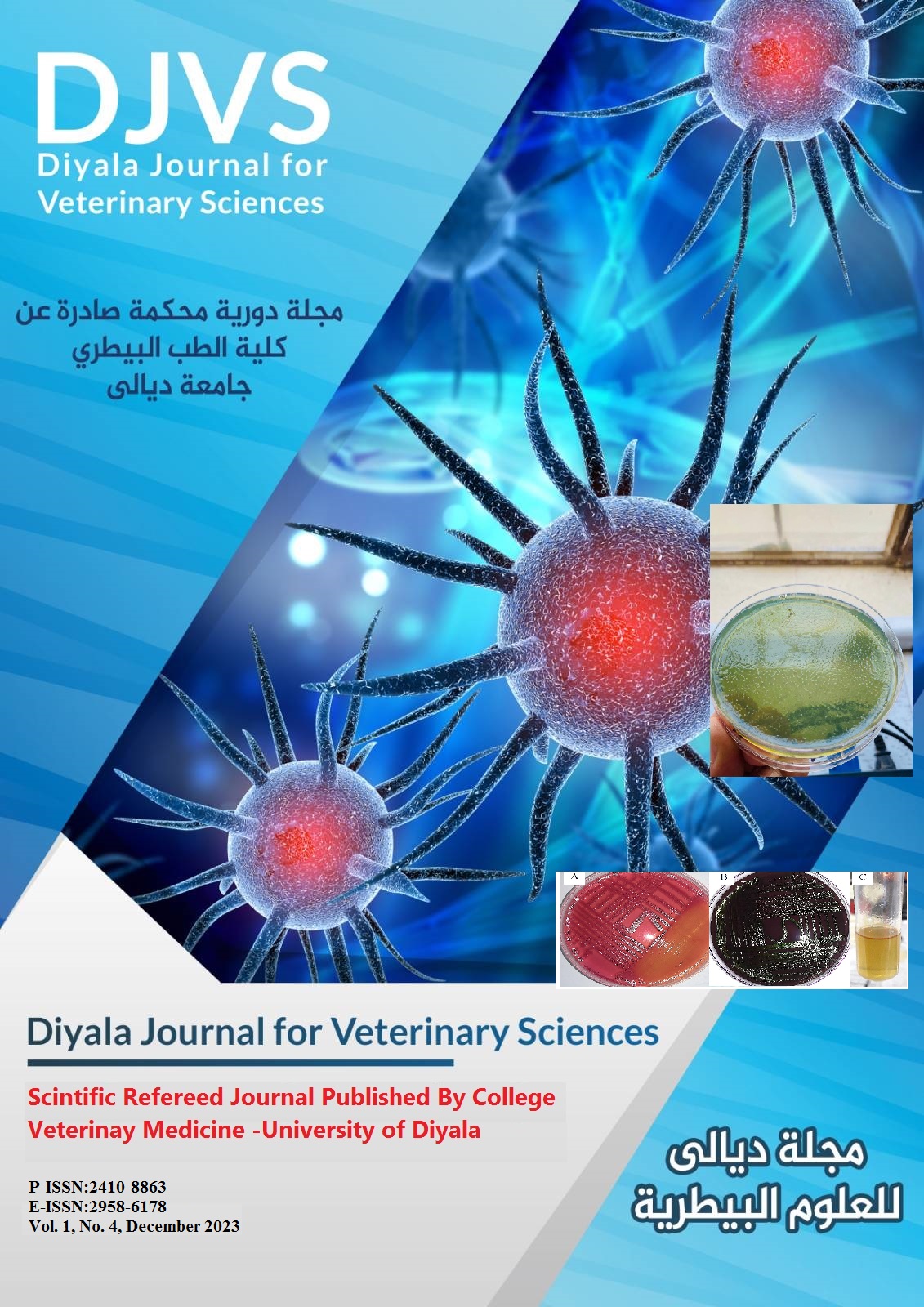Histological Study of the Effects of Propranolol on the Kidney and Liver of Rabbit(Oryctolagus cuniculus)
DOI:
https://doi.org/10.71375/djvs.2023.01407Keywords:
propranolol, kidney, liver, rabbitAbstract
Twelve healthy adult rabbits were included (20 to 40 mg of propranolol per rabbit daily with drinking water). The 2nd group received only water without propranolol as a control. The liver and kidneys were collected and prepared for histopathological study. After 40 days of treatment, most of animals suffer from weakness ,rough coat, loss of appetite, and lacrimation, enlargement of the liver and gall bladder ,petechial hemorrhage on the liver surface. Vacuolation of the hepatic tissue and hemorrhagic spots scattered among and within hepatic tissue. Small-droplet of fat is found in virtually all hepatocytes. This change is most often associated with long-term use of high doses of propranolol. slight enlargement of the kidney , with petechial hemorrhage edematous fluids in the parenchyma between the tubule, the kidney show loss of bowman space and thickening of the wall of proximal and distal convoluted tubules .
Downloads
Downloads
Published
How to Cite
Issue
Section
License
Copyright (c) 2023 Ahmed Abdulla Hussein, Raad Shaalan Ibrahim

This work is licensed under a Creative Commons Attribution-NonCommercial 4.0 International License.



